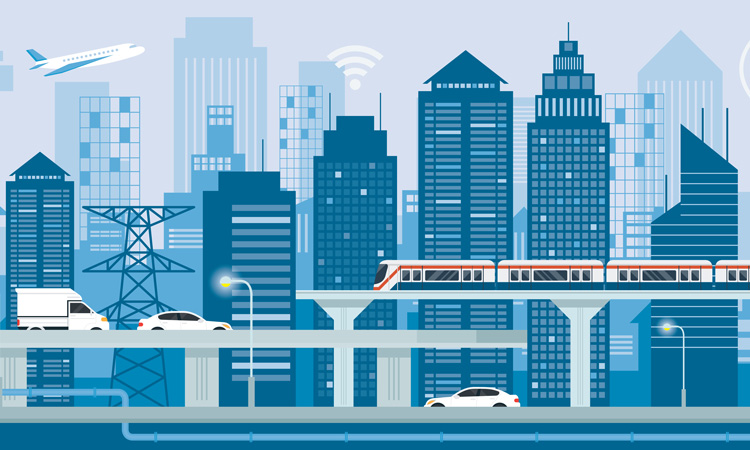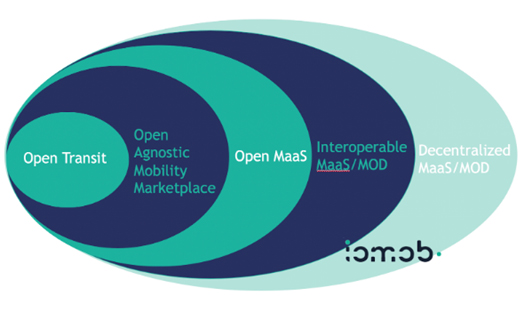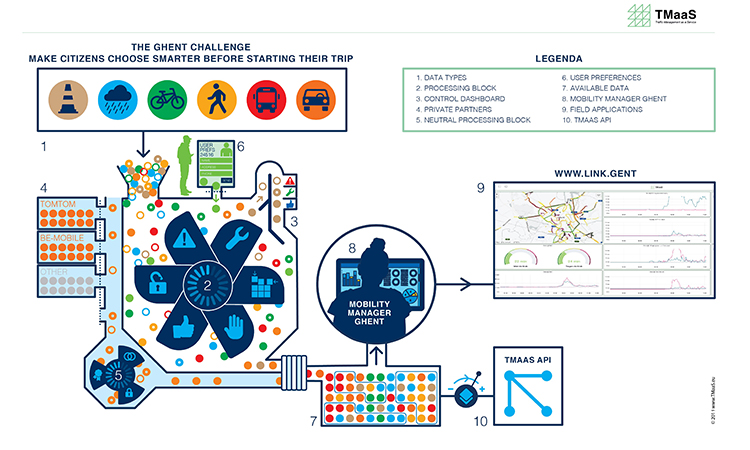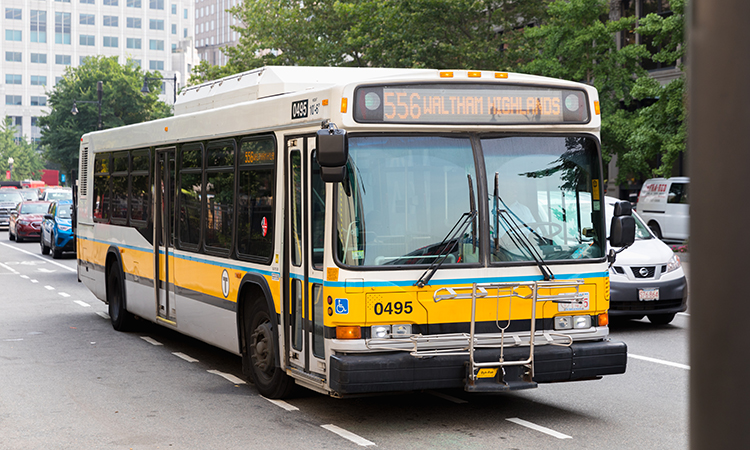Insights
Mobility Trends
Five mobility trends to watch out for in 2021
Published on Intelligenttransport.com
From the article:Five Mobility Trends to Watch out for in 2021
Five mobility trends to watch out for in 2021
Carol Schweiger lays out her vision for the transport industry in 2021, while reflecting on last year's predictions and assessing how many of them came to fruition.

There seems to be a plethora of articles that cover mobility trends and predictions for 2021, and I imagine that you have already read several of those. So here are my predictions for 2021 as I consider innovations that are here for the longer term, beyond the pandemic, and the issues associated with those innovations, such as how equity can be achieved with technology-enabled mobility.
Let's do a quick re-cap of my 2020 predictions ( as well as the revisions made as a result of the COVID-19 pandemic) see and see whether or not they were realised.
- "> "> "> "> "> "> "> "> "> "> "); font-family: muli, Arial; font-weight: 300; background-position: left 9px; background-repeat: no-repeat no-repeat;">More travel time goals in major urban areas as a result of transportation planning efforts. While Singapore defined their travel time goals in 2019 as part of their Land Transport Master Plan 2040.1 in 2020, the 15-minute city was touted by several cities as a way in "which daily urban necessities are within a 15-minute reach on foot or by bike."2
- Mobility as a Service (MaaS) deployments incorporating traffic data. In 2020, Ghent, Belgium, realised Traffic Management as a Service (TMaaS), which was developed as part of the Urban Innovative Actions (UIA) Initiative of the European Union. Ghent's TMaaS is shown below. 3
- Automated vehicles (AVs) will actually be put into public transport service. In 2020, the Future Automated Bus Urban Level Operation System (FABULOS) project demonstrated actual public transport operations using AVs in regular traffic in a variety of locations in Europe. Furthermore, in the US, AVs are an integral part of Jacksonville Transportation Authority's (JTA's) Ultimate Urban Circulator Program (U2C) to greatly improve mobility in and around Jacksonville. 4
- More use of artificial intelligence (AI) and deep learning in public transport. While a Union Internationale des Transports Publics (UITP) Artificial Intelligence (AI) in Mass Public Transport study identified existing and promising applications of AI in 2018, in 2020, new applications of AI have been used to provide flexibility in critical public transport activities that typically take a long time to perform, such as fixed-route scheduling, while considering COVID-19 implications such as social distancing and vehicle cleanliness. I address this more in my 2021 predictions later in the article.
- Focus on the "Complete Trip." The US Department of Transportation (USDOT) "awarded over $38 million to five awardees through its Complete Trip - ITS4US Deployment Program. The projects will enable communities to showcase innovative business partnerships, technologies, and practices that promote independent mobility for all. The three-phased effort will create large-scale, replicable deployments that generate increased mobility options across multiple modes of transportation to address the challenges of planning and executing complete trips." 5
- More pilot programs that not only digitise the curb, but also institute a reservation system or regulate the curb. Numerous curb management efforts have been conducted in 2020 throughout the world. Notable projects in the US include those in Aspen, Colorado; Bellevue, Washington (part of the 2020 Transportation for America Smart Cities Collaborative); and Omaha, Nebraska. 6
- Continue to move toward open platforms and data to drive technology-enabled mobility services. In 2020, this move continued and was perhaps best exemplified by the "Openness in MaaS" defined by Boyd Cohen, PhD, IoMob CEO. He "presented the following graphic to guide a discussion on the relative amount of openness we are witnessing and envision for the future." 7

"Openness in MaaS"
Adding to this is the work of the Open Mobility Foundation (OMF), which "is an open-source software foundation that creates a governance structure around open-source mobility tools, beginning with a focus on the Mobility Data Specification (MDS)". 8

TMaaS in Ghent, Belgium9 Credit: Wim Vandersleyen
1. MaaS or MOD?
The lines between MaaS and Mobility on Demand (MOD) will continue to blur. While there are and have been many efforts to define both of these terms (eg SAE J3163: Taxonomy of On-Demand and Shared Mobility), the industry continues to discuss critical characteristics of on-demand mobility services.
In summary, many of these discussions result in the realisation that MaaS is a tool that provides access to MOD. However, discussions regarding the relevant business models, the impacts of MaaS and MOD on travel behavior, the sustainability of MaaS/MOD platforms given their current reliance on venture capital, the development and use of proper evaluation frameworks, and determining "readiness" for MaaS will continue in 2021. 10 11 12 13 14 15 16
2. Developing standards within technology
The second prediction is that much more work will be done in harmonising standards upon which various types of technology-enabled mobility are based. A project conducted by the USDOT, the Multimodal and Accessible Travel Standards Assessment, developed among other reports, a standards roadmap to address gaps and trends that will be inclusive, address inequities, and meet needs of vulnerable transportation users.
One overarching activity that will be necessary is the co-ordination of standards that have been developed independently through different organisations. This has resulted in "inconsistencies, ambiguities and incomplete requirements [which] prevent interoperability."
Furthermore, this necessitates collaboration and the harmonisation of the technical standards among the varied organisations developing standards for the various communities and domains." 17 For example, in the curb access and management area, there are multiple gaps and overlaps in the current standards that will benefit from harmonisation. Currently, the International Organization for Standardization (ISO) is developing ISO 4448 - a global standard for the future sidewalk and curb.
Another example of mobility standards harmonisation is the "Transport Operator to MaaS Provider [TOMP]- Application Programming Interface [API], which is a standardised and technical interface between MaaS providers and transport operators.
This standard-based API from Transport Operators (TO) to or from MaaS Providers (MP) allows all participating companies to communicate about planning, booking, execution, support, general information and payments of multimodal, end-user specific trips. Using the TOMP-API enhances the interoperability between parties in the MaaS ecosystem." 18The TOMP standard-based API was developed by the MaaS program of the Dutch Ministry of Infrastructure and Water Management.

Standards will need to be harmonised to ensure our mobility technology runs smoothly
3. Levelling the playing field
The third prediction is the recognition of, and effort to, incorporate equity into technology-enabled mobility services. While equity discussions erupted throughout the world in 2020 as a result of the death of George Floyd, this event elevated the equity of mobility services well beyond where it was in the past. Key discussions in the past included the following:
- In 2016, the equity of technology-enabled mobility services was covered in US Transportation Research Board (TRB) Special Report 319 19
- In 2017, "STEPS to Transportation Equity" including key equity dimensions were developed in a USDOT project and described in my 2019 predictions article for Intelligent Transport 20
- In 2018, a mobility equity framework was described in The Greenlining Institute's "Mobility Equity Framework: How to Make Transportation Work for People" 21
- In 2019, the "Equity and Smart Mobility" study was commissioned by the Institute for Sustainable Communities (ISC) and conducted by the Center for Neighborhood Technology (CNT) 22
In 2021, I expect that equity will be directly addressed, in part, through technology firms and public sector agencies identifying and using equity metrics in the development and deployment of technology-enabled mobility services.
This approach could be facilitated by an equity assessment tool, such as that being developed in TRB's Transit Cooperative Research Project (TCRP) B-47: Impact of Transformational Technologies on Underserved Populations. This project will "develop an assessment tool that can be used as a checklist for reviewing the inclusiveness of transformational technologies for transportation services. Develop mobility inclusion guidelines for developing and implementing emerging mobility services. The guidelines will aid practitioners in efforts to include underserved users in the transportation technology revolution." 23
4. Speeding up processes
The fourth prediction is that activities related to public transport operations that typically take a long time, such as scheduling and restructuring transport services, will be able to be conducted quickly. This flexibility and agility will be required in order to adjust services or provide new information to the public on an as-need basis according to pandemic factors that impact the use of public transport.
Download our NEW 2021 Media planner
To assist in putting together your marketing strategy for 2021, please download our NEW 2021 Media planner which is packed with various opportunities for you to engage with Intelligent Transport's ever-growing audience.
We are continuing our work with leading transport operators, authorities and associations alike on a range of multimedia content that pushes the messages that matter to our audience.
Intelligent Transport has been recognised by the TABBIE awards, winning GOLD for digital imagery on a front cover. Partnering with us gives you the opportunity to work with an award-winning team to help you reach the right people at the right level and at the right time. Make sure you are a 2021 Intelligent Transport collaborator.
These factors, which are expected to exist beyond the pandemic, include physical distancing, vehicle, station or stop crowdedness and cleanliness, modifying services to ensure minimum service levels for critical workers (who often cannot work from home and have no other way to access their jobs), and optimising the transport workforce.
Public transport has not been agile traditionally, particularly in adjusting service levels and providing new real-time information. With the advent of new tools, including the use of AI and machine learning, the analyses that drive these innovations can be done very quickly and operational modifications put into place virtually overnight.
For example, the Massachusetts Bay Transportation Authority (MBTA) in Boston deployed new and critical real-time crowding information to passengers in three months. The effort that was required to bring this information to the public would have normally taken much longer. The idea to provide this information was conceived on 9 April, 2020 and deployed in the field on 19 June, 2020. 24

The MBTA managed to launch a significant project in just three months
5. Improving technology
The fifth prediction, which is directly related to the fourth, is making significant improvements in transport technology, such as real-time transport information and contactless payment methods. One example of improving the accuracy of real-time information is the improved NexTrip system used by Metro Transit in Minneapolis/St. Paul, Minnesota.
In the autumn of 2020, Metro Transit deployed their improved NexTrip system which incorporates a "customised real-time prediction algorithm that combines historical and real-time information with Metro Transit-specific operating rules and practices to produce the most accurate results.
"This prediction method uses an adaptive algorithm, so the predictions will improve over time and react to unexpected events. The prediction algorithm employs a Kalman Filter that draws on data from the past weeks, days and hours to handle travel time and dwell time (when the bus is stopped).
"The Kalman Filter is an adaptive algorithm, capable of recognizing unusual conditions (such as traffic congestion, weather events, etc.). When these events occur, the algorithm incorporates the travel times of downstream vehicles to create predictions that are more accurate than traditional methods." 25
The other innovation associated with real-time information comes from a TCRP Transit Innovations Deserving Exploratory Analysis (IDEA) project in which "Interline Technologies and the Center for Urban Transportation Research (CUTR) at the University of South Florida (USF) have created a prototype platform that makes GTFS Realtime validation tools readily available to, potentially, all transit agencies in North America. The project included testing the prototype platform with staff at a representative sample of transit agencies and proposed next steps for expanding the platform into a 'self-serve' process for more agencies." 26
At Intelligent Transport's Transport Innovation Summit 2020 in a panel session entitled 'Assessing What Comes Next For Payments In Urban Transport', Jeremy Acklam, the Integrated and Smart Travel Director with Transport for the North (TfN), mentioned that identity is what drives the future of payments in transport, so the use of a contactless bankcard is likely to be a more short-term payment solution.
The side effect of using a bankcard is what happens to your identity - it is passed around to multimodal services, so it is questionable whether your identity is secure. This session included a discussion of moving toward a pseudonymous payment method and away from bankcards in transport.
Put simply, "anonymous data is any information from which the person to whom the data relates cannot be identified, whether by the company processing the data or by any other person. Pseudonymous data still allows for some form of re-identification (even indirect and remote), while anonymous data cannot be re-identified." 27 In 2021, it is likely that we will begin to see this payment innovation in addition to other innovations such as biometric identification solutions.
While technology-enabled mobility advances continue to be identified, it often takes a culture of innovation within public transport agencies to facilitate the application of these advances. In the US, we are seeing more and more agencies embrace innovation by creating positions or departments that focus on innovation. For example, innovation directors can be found in not only major urban transport agencies (e.g., Dr. Joshua Schank, Chief Innovation Officer, Office of Extraordinary Innovation, Los Angeles Metro), but also in smaller agencies (e.g., Sophia Mohr, Chief Innovation Officer at Central Ohio Transit Authority [COTA]). In 2021, I expect to see these leaders drive the deployment of new technology innovations.
References
- https://www.lta.gov.sg/content/dam/ltagov/who_we_are/our_work/land_transport_master_plan_2040/pdf/LTA%20LTMP%202040%20eReport.pdf
- Natalie Whittle, "Welcome to the 15-minute city," Financial Times, July 17, 2020, https://www.ft.com/content/c1a53744-90d5-4560-9e3f-17ce06aba69a
- https://www.uia-initiative.eu/en/uia-cities/ghent
- Carol Schweiger, "Automated Vehicles - Planning for the Future," prepared for the National Center for Applied Transit Technology, October 23, 2020, https://n-catt.org/wp-content/uploads/2020/12/AVs_Final_WhitePaper.pdf
- "U.S. Department of Transportation Announces Over $41 Million in Awards for Innovative Technologies to Improve Transportation Mobility and Access for Persons with Disabilities," January 6, 2021, https://www.transportation.gov/briefing-room/us-department-transportation-announces-over-41-million-awards-innovative-technologies
- Skip Descant, "Curb-Management Pilots Smooth the Flow of Traffic, Deliveries," Government Technology, January 13, 2021, https://www.govtech.com/fs/Curb-Management-Pilots-Smooth-the-Flow-of-Traffic-Deliveries.html
- Iomob Team, "The Many Shades of Openness in MaaS/MOD," 23 October 2020, https://www.iomob.net/the-many-shades-of-openness-in-maas-mod/
- "About the Open Mobility Foundation," https://www.openmobilityfoundation.org/about/
- Stephanie Leonard, "Connecting Traffic Management & MaaS," Presentation in 2020 ITS World Congress All-Access, Session 4018: The Role of Transportation Systems Management and Operations in Mobility as a Service, October 8, 2020, https://www.itsamericaevents.com/its-all-access/en-us/education-sessions/session-details.1846.45434.the-role-of-transportation-systems-management-and-operations-in-mobility-as-a-service.html
- SkedGo, "MaaS use cases #5: changing business models and innovative use of transport assets," Medium, September 14, 2020, https://medium.com/@skedgo/maas-use-cases-5-changing-business-models-and-innovative-use-of-transport-assets-dc71b03ddf3c
- Boyd Cohen, Ph.D., "The MaaS Monetization Matrix," Medium, May 11, 2020, https://medium.com/@boyd_19249/the-maas-monetization-matrix-by-iomob-a8cc17be5aa
- Jana Sochor, Ph.D., "Piecing together the puzzle of Mobility as a Service: Insights from the user and service design perspectives," presentation in International Transport Forum (ITF) Roundtable on Integrating Public Transport into MaaS, October 12, 2020, https://www.itf-oecd.org/integrating-public-transport-mobility-service-maas-roundtable
- Mulley, C. and J. Nelson (2020), "How Mobility as a Service Impacts Public Transport Business Models", International Transport Forum Discussion Papers, No. 2020/17, OECD Publishing, Paris, , https://www.itf-oecd.org/integrating-public-transport-mobility-service-maas-roundtable
- Susan Shaheen and Adam Cohen, "Chapter 3 - Mobility on Demand (MOD) and Mobility as a Service (MaaS): Early Understanding of Shared Mobility Impacts and Public Transit Partnerships," In Demand for Emerging Transportation Systems: Modeling Adoption, Satisfaction, and Mobility Patterns, 2020, Pages 37-59, https://doi.org/10.1016/B978-0-12-815018-4.00003-6, December 2019, https://escholarship.org/uc/item/5030f0cd
- Jana Sochor, Ph.D., "Evaluation of Mobility as a Service," Presentation in 2020 ITS World Congress All-Access, Session 4673: Does MaaS Contribute to Sustainable Transportation?, September 23, 2020, https://www.itsamericaevents.com/its-all-access/en-us/education-sessions/session-details.1846.45413.does-maas-contribute-to-sustainable-transportation.html
- The Queensland Department of Transport and Main Roads (TMR), in collaboration with Mott MacDonald and a team of international specialists, has developed a MaaS and Mobility Assessment Framework. These framework will be the subject of a webinar in March 2021 sponsored by the Transportation Research Board's Committee on Innovative Public Transportation Services and Technologies (AP020)
- Paula Okunieff, Deepak Gopalakrishna, Les Brown, Carol Schweiger, Annie Chang, Katy O'Reilly and Adrian Guan, Roadmap for Multimodal and Accessible Traveler (MAT) Standardization Work, prepared for USDOT, Draft Report, to be published on https://www.its.dot.gov/research_archives/mod/mod_resources.htm
- Blueprint for an API for TOs and MPs (the TOMP-API), https://github.com/TOMP-WG/TOMP-API/wiki/Introduction
- National Academies of Sciences, Engineering, and Medicine 2016. Between Public and Private Mobility: Examining the Rise of Technology-Enabled Transportation Services. Washington, DC: The National Academies Press. https://doi.org/10.17226/21875. http://nap.edu/21875
- Carol Schweiger, "Top Five technology trends to transform mobility in 2019, Intelligent Transport, 18 January 2019, https://www.intelligenttransport.com/transport-articles/75123/top-five-technology-trends-to-transform-mobility-in-2019/
- Hana Creger, Joel Espino and Alvaro S. Sanchez, "Mobility Equity Framework: How to Make Transportation Work for People," The Greenlining Institute, http://greenlining.org/wp-content/uploads/2018/03/Mobility-Equity-Framework-Final.pdf
- Linda Young, Elizabeth Irvin and Preeti Shankar, Equity and Smart Mobility, prepared for the Institute for Sustainable Communities (ISC) by the Center for Neighborhood Technology (CNT), September 2019, https://www.cnt.org/sites/default/files/publications/Equity-and-Smart-Mobility-Report.pdf
- TCRP B-47 - Impact of Transformational Technologies on Underserved Populations, https://apps.trb.org/cmsfeed/TRBNetProjectDisplay.asp?ProjectID=4686
- Ashli Molina, "Communicating Crowding Information to Riders: During COVID and Beyond," presentation at Autonomy Digital 2020, 4 November 2020, https://autonomy.app.swapcard.com/event/autonomy-digital-2020/planning/UGxhbm5pbmdfMjIyNzYx
- Sarah Anderson, "A pilot to enhance real-time bus predictions for Metro Transit," Cambridge Systematics Insights, September 09, 2019, https://www.camsys.com/insights/pilot-enhance-real-time-bus-predictions-metro-transit
- Drew Dara-Abrams, Ph.D., An Open Platform for Transit Agencies to Improve the Quality of Their Real-Time Data, TCRP Transit IDEA Project 93, October 2020, http://onlinepubs.trb.org/onlinepubs/IDEA/FinalReports/Transit/Transit93.pdf
- Cédric Burton and Sára Hoffman, "Personal Data, Anonymization, and Pseudonymization in the EU," The WSGR Data Advisor, September 15, 2015, https://www.wsgrdataadvisor.com/2015/09/personal-data-anonymization-and-pseudonymization-in-the-eu/
Biography
Carol Schweiger is the President of Schweiger Consulting and Chairperson of the New England Intelligent Transportation Society. She is internationally recognised in transportation technology consulting, providing over 55 transportation agencies with technology technical assistance. She has authored numerous Transit Cooperative Research Program (TCRP) Synthesis reports and full TCRP reports.
Currently, she serves as co-Chair of the Transportation Research Board (TRB) Committee on Emerging and Innovative Public Transport and Technologies, a Charter Member of the Public Transportation Systems and Services (PTSS) Committee of the Intelligent Transportation Society of America and member of the International Program Committee of the ITS World Congress and TRB ITS Committee.

